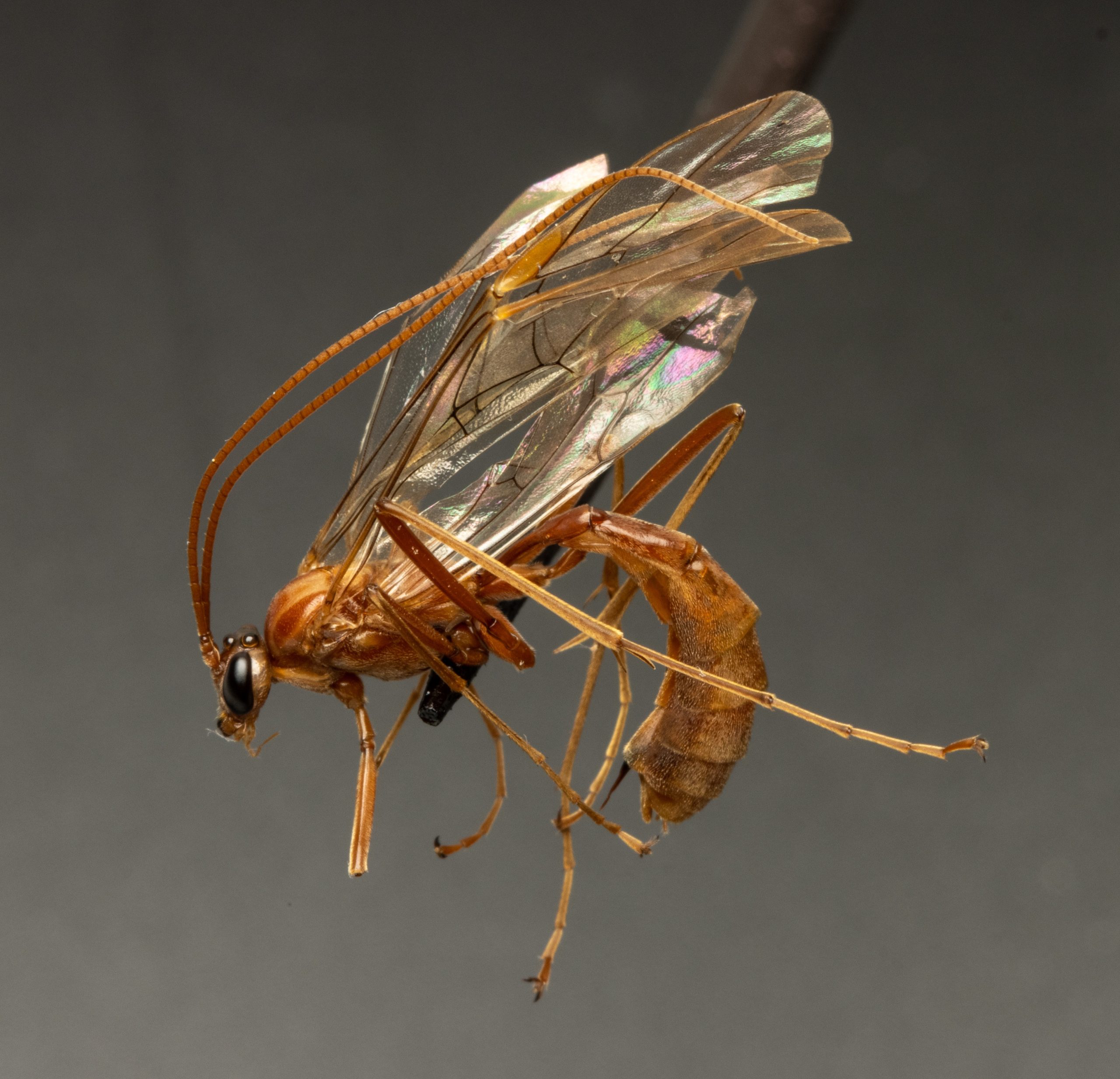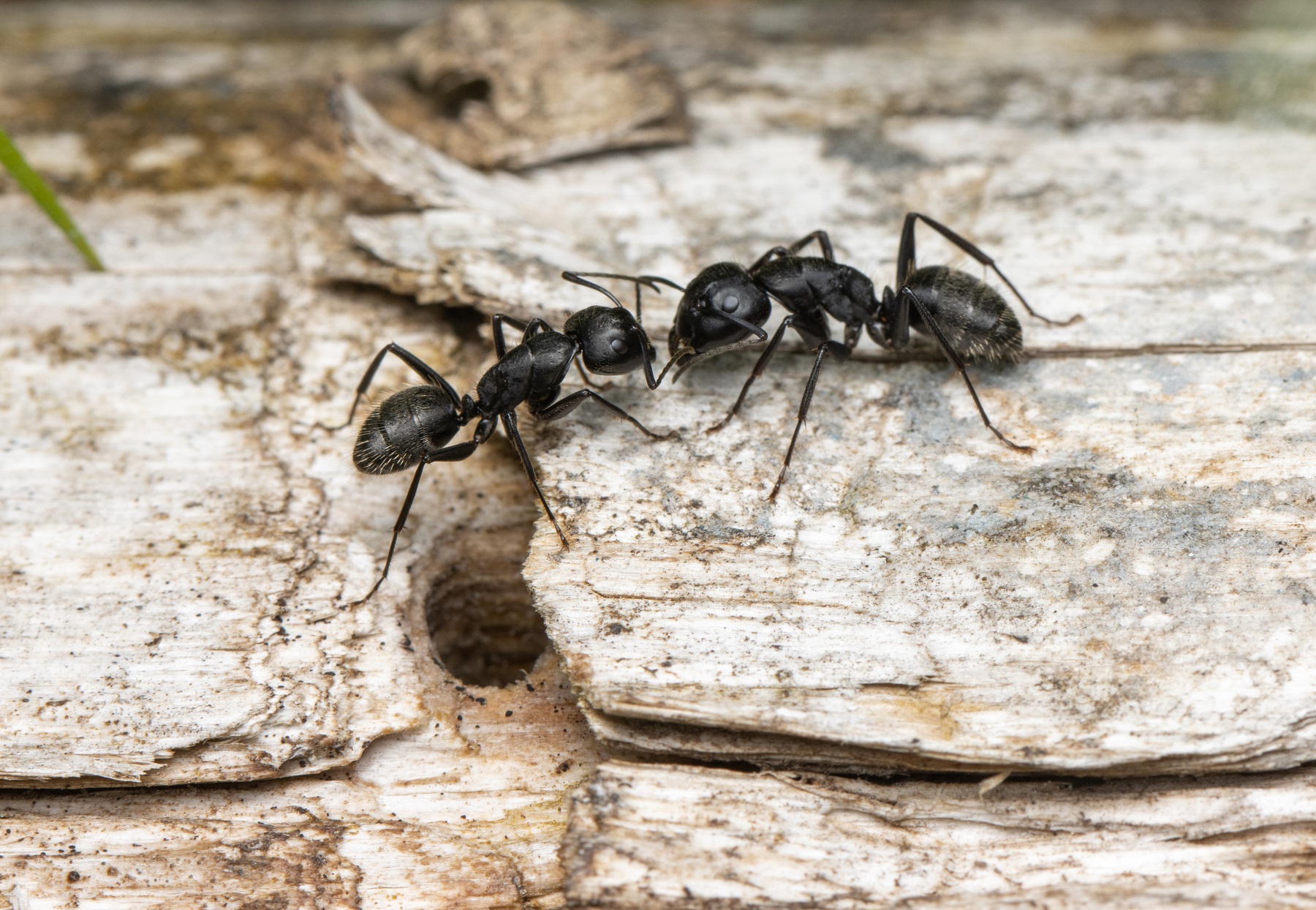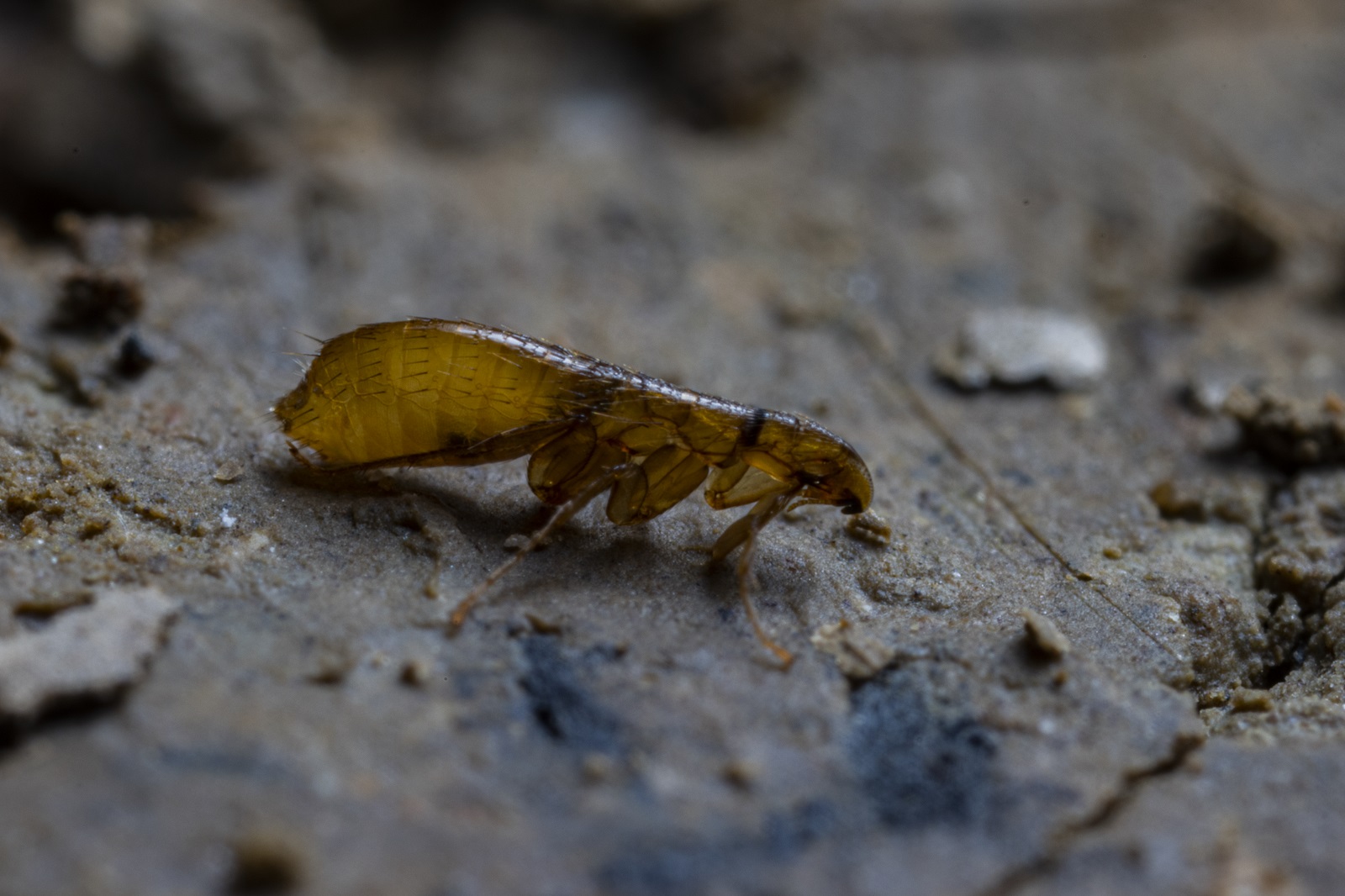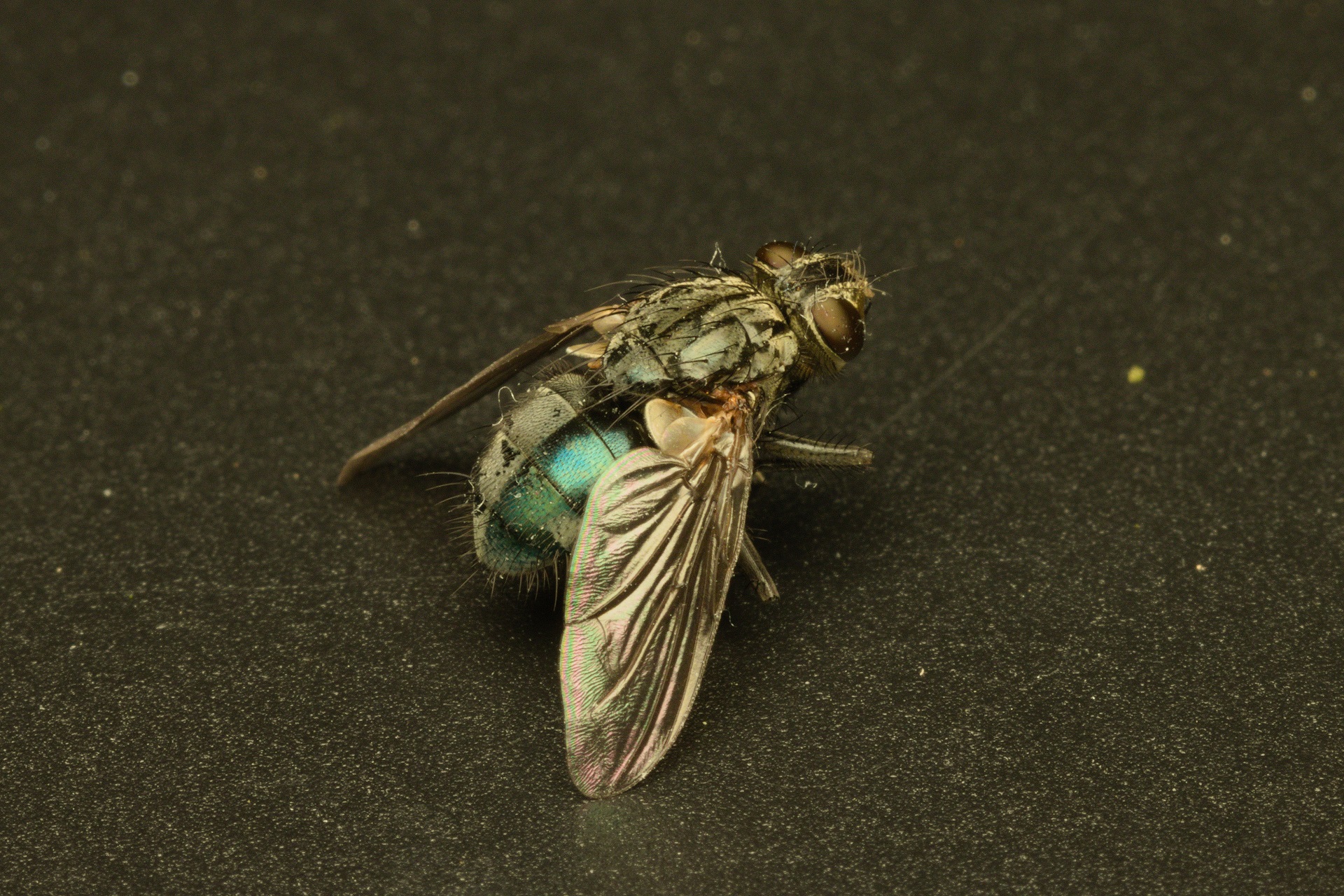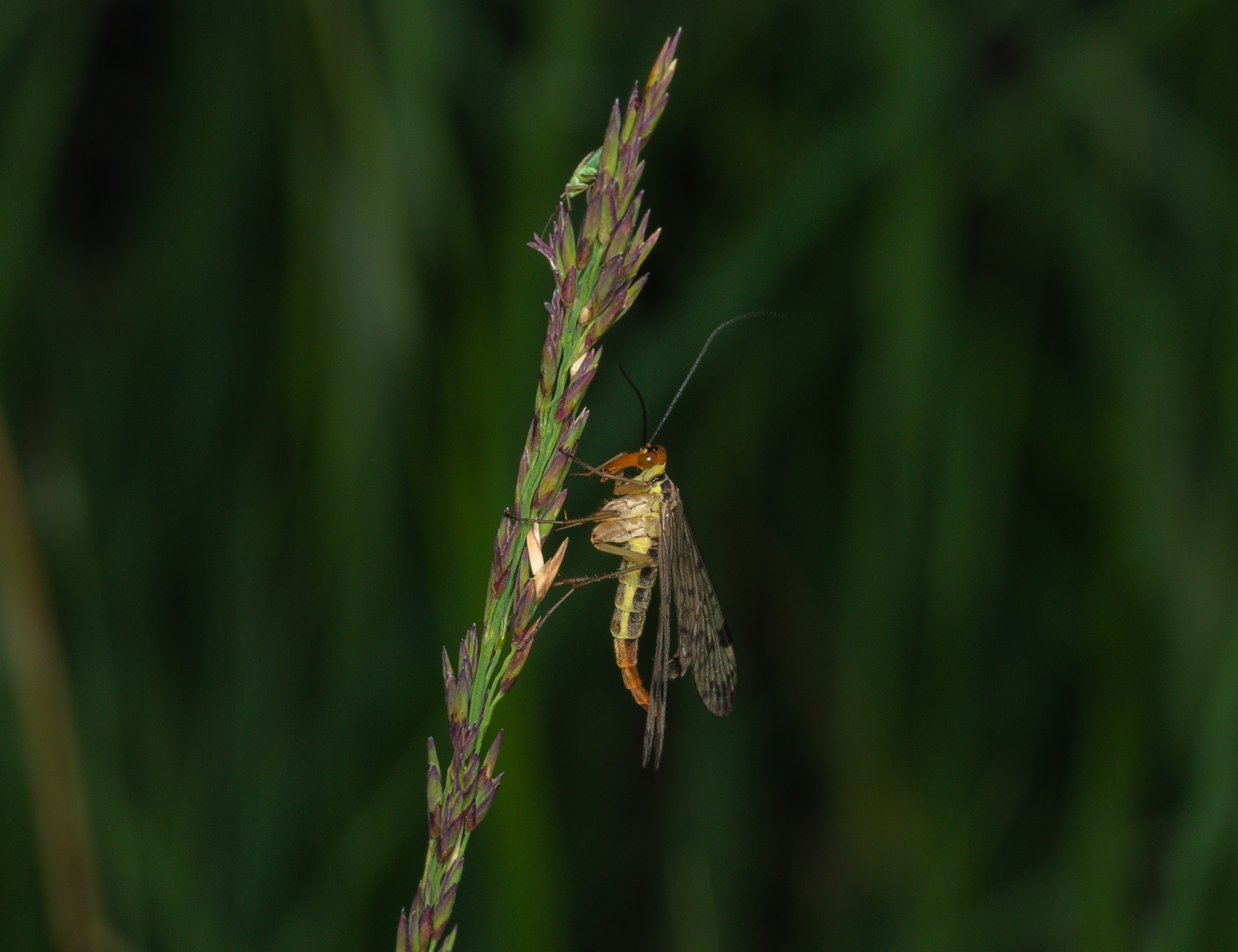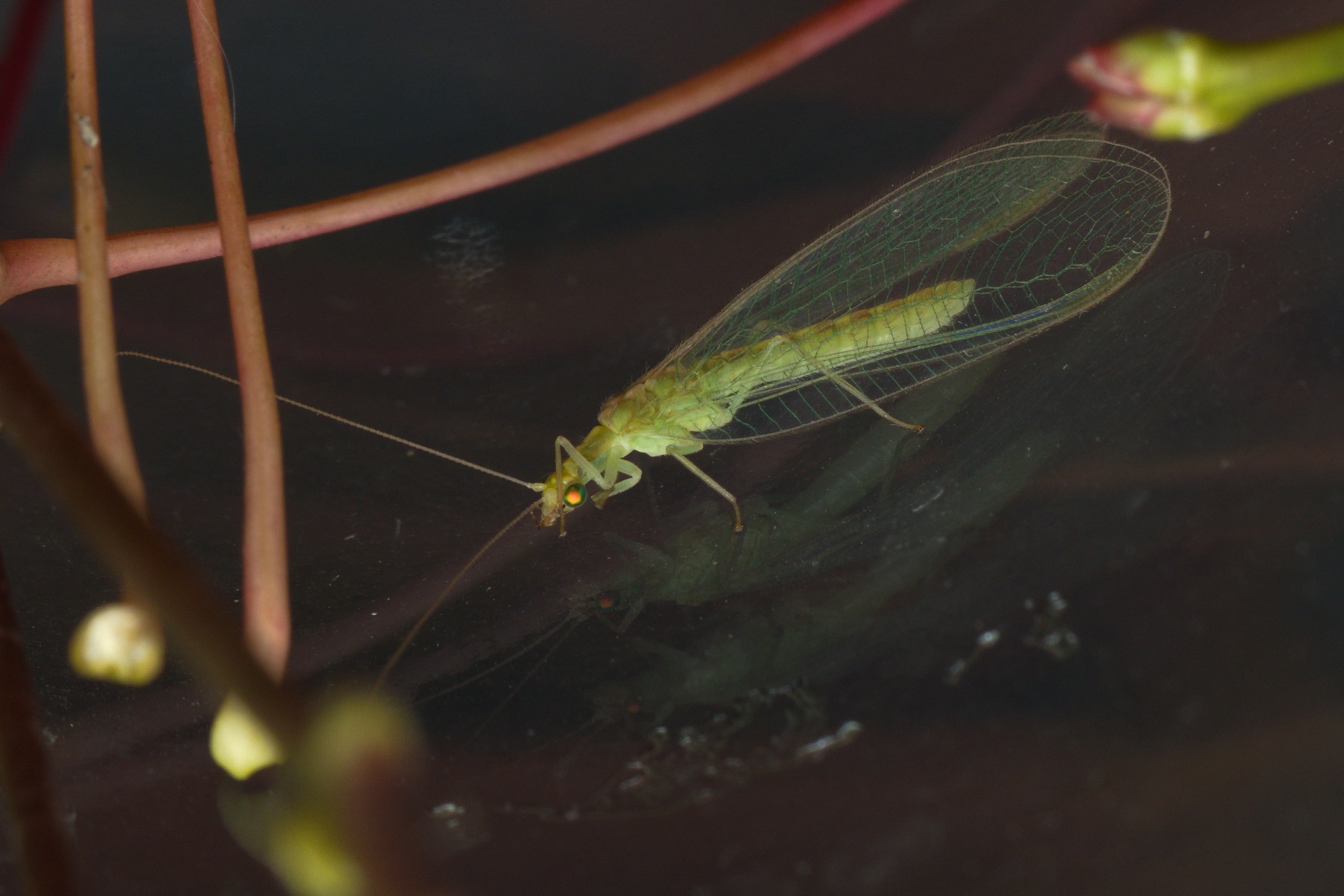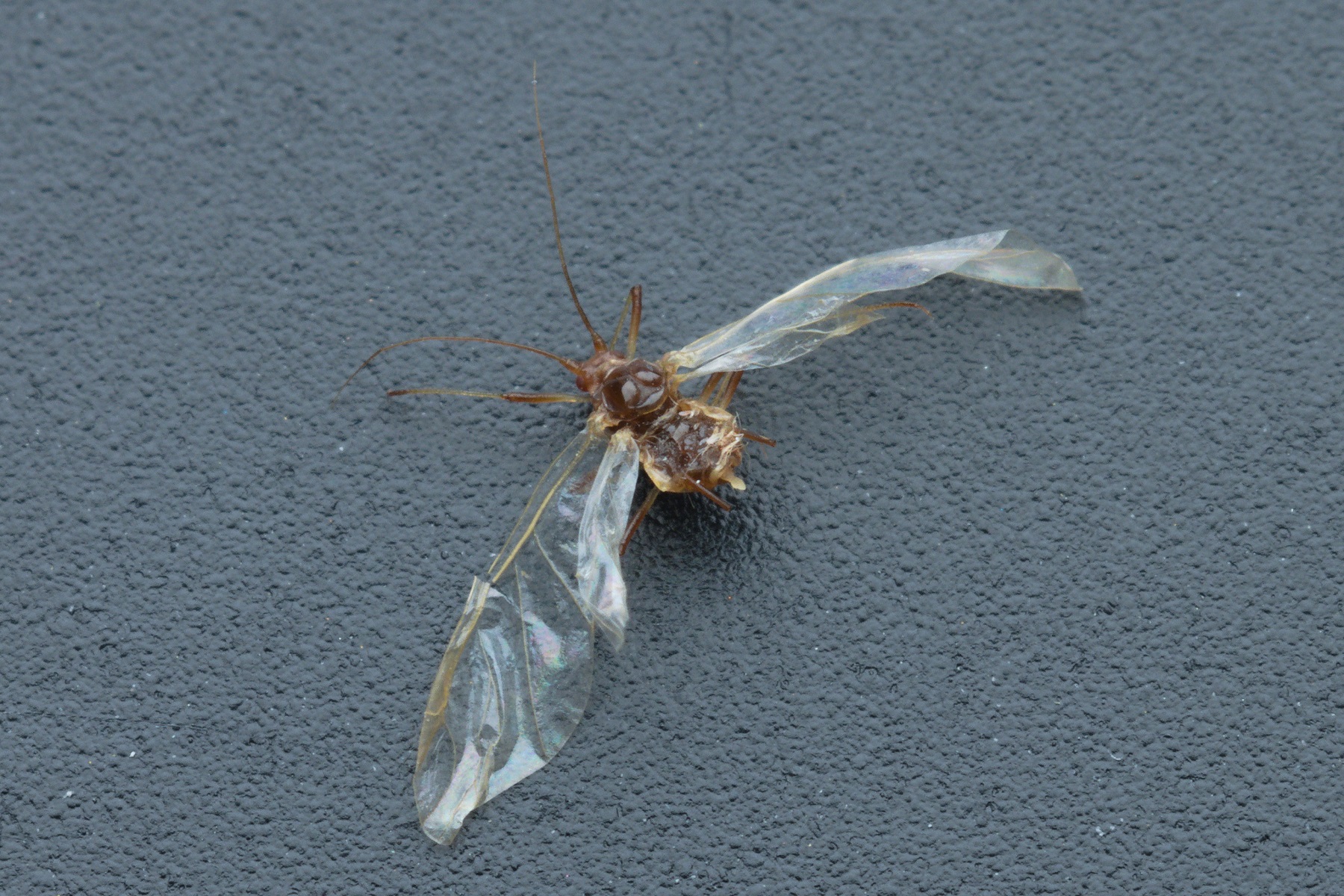Tabanidae
Description
Horse flies are larger flies with an average body length of about one centimetre. On the head they have short, stocky antennae, extremely large and often brilliant green or brightly coloured compound eyes, and a stinger with two strong blades. On the thorax, they have only one pair of narrow membranous or dark-coloured wings, while the other pair is in the form of protrusions called halteres (knob-like hindwings). The thorax often has transverse light stripes on a dark background, which makes them resemble vellus hairy wings.
Biology
The family of horse flies and deer flies includes about 4,500 species, which are distributed on all continents. Adults feed on nectar and pollen and can be important pollinators. Females of most species also need a blood meal from warm-blooded animals to successfully form eggs. As bloodsuckers, they can transmit various diseases, especially in domestic animals. Their larvae are legless, have visible heads and live in moist soil, where they feed as predators. They also burrow into the soil. Females are attracted by the polarised reflection of light from bodies of water, which is why they often gather there.

Sorodni členonožci

Authors
- Urban Bogataj,
- Gregor Bračko,
- Teo Delič,
- Cene Fišer,
- Žiga Fišer,
- Rok Kostanjšek,
- Rudi Verovnik,
- Miloš Vittori,
- Valerija Zakšek.
Students Vito Ham, Vesna Jurjevič, Gaj Kušar, and Adrijan Samuel Stell Pičman also participated in the project.
